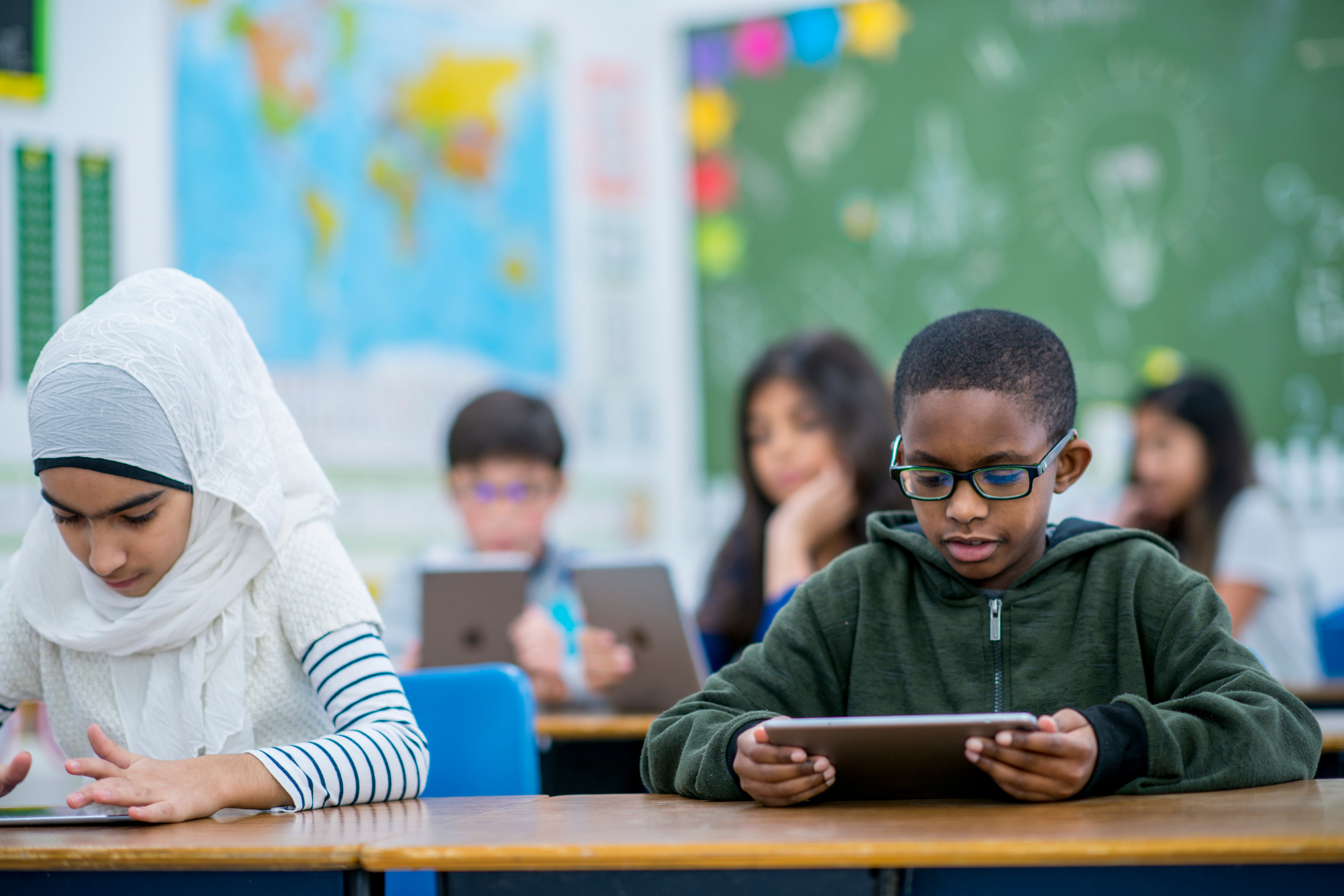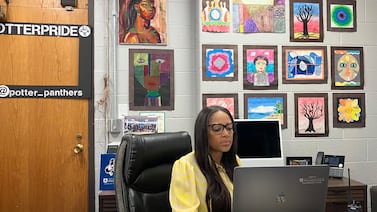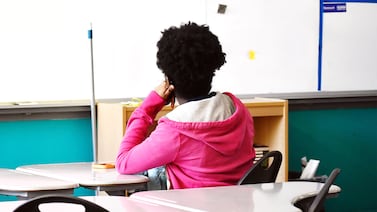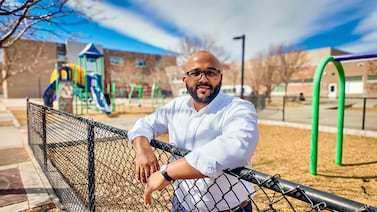Federal officials are urging school leaders to protect Jewish and Muslim students from discrimination following an “alarming rise” in reports of antisemitism, Islamophobia, and other incidents of bias at colleges and K-12 schools over the last month.
The letter, shared with U.S. schools and colleges on Tuesday, comes one month after the militant group Hamas launched a surprise attack against Israel, killing more than 1,400 people. Israel has responded with airstrikes in Gaza that have killed at least 10,000 people and displaced more than a million others.
The news has shaken many school leaders, educators, and students with ties to Israel and the Gaza Strip, and prompted protests on college campuses nationwide.
Since the start of the conflict on Oct. 7, the Education Department has received at least seven discrimination complaints involving antisemitism and two involving Islamophobia, a department spokesperson told Chalkbeat in an email. Most stemmed from incidents at colleges, but at least one incident happened at a K-12 school.
“The rise of reports of hate incidents on our college campuses in the wake of the Israel-Hamas conflict is deeply traumatic for students,” Education Secretary Miguel Cardona said in a statement on Tuesday. “College and university leaders must be unequivocal about condemning hatred and violence and work harder than ever to ensure all students have the freedom to learn in safe and inclusive campus communities.”
Several incidents have been documented in news reports over the last month. At Cornell University, police were called after online posts threatened Jewish students. The University of Pennsylvania alerted the FBI about antisemitic emails that threatened the campus’ umbrella organization serving Jewish students. A hit-and-run that injured a Muslim student at Stanford University is being investigated as a hate crime. In suburban Denver, students of Palestinian descent reported racist bullying at their high school, while in New Jersey a high schooler had her hijab ripped off.
In the letter, the assistant secretary for civil rights, Catherine Lhamon, noted that schools that receive federal funds are legally required to protect Jewish, Israeli, Muslim, Arab, and Palestinian students from discrimination. That could include racial or ethnic slurs, stereotypes based on a student’s religious style of dress, or discrimination related to a student’s accent, ancestry, name, or language.
A few days before the Education Department issued its letter, a coalition of three organizations that advocate for the civil rights of Arab Americans and Palestinian people had asked the department to “take urgent special measures to ensure that Palestinian, Arab and Muslim students, or students perceived as such” were protected from discrimination at school. They cited examples of students who’d been doxxed and the recent murder of a 6-year-old in suburban Chicago in what police have described as an anti-Muslim hate crime.
Incidents of antisemitism and Islamophobia were on the rise even before the war between Israel and Hamas, according to organizations that track such incidents.
The Council on American-Islamic Relations, a Muslim civil liberties and advocacy organization, noted that the education discrimination complaints it received last year had jumped by a “disturbing” 63% to 177 cases. That included instances of Islamophobic school curriculum and failure to accommodate Muslim students’ religious requests. (Bullying at K-12 schools, such as an incident in which a Delaware middle schooler who was told by her teacher she was too skinny to fast during Ramadan, were tracked in a separate category.)
The Anti-Defamation League, a Jewish civil rights and advocacy organization, documented 494 incidents of antisemitism at non-Jewish, K-12 schools last year, a 49% increase over the prior year. Most were incidents of harassment, such as a student taunting a Jewish classmate with a Holocaust joke, or vandalism, such as a swastika drawn on a school wall.
Meanwhile, when Education Week and ProPublica reviewed nearly 500 incidents of hate in schools between January 2015 and December 2017, the news organizations found that incidents targeting Jewish and Muslim students were among the most common.
Kira Simon, the director of curriculum and training for the Anti-Defamation League’s education program, which offers anti-bias training to schools, said that teachers can help combat the kind of harmful rhetoric that can lead to bullying and harassment at school by taking a few key steps.
If teachers regularly lead discussions about current events in their classrooms, she said, they should stop to think about how those conversations could “impact my students who are Jewish, or how might it impact my students who are Muslim or my students who are Palestinian or Arab?” she said. “And not to assume how it would impact them, but to be thoughtful.”
That could mean putting ground rules in place for having a respectful discussion, letting students opt out of the conversation, or giving them an alternative assignment if they’re having a strong emotional reaction. It can also be a good idea to give students advance notice about these conversations, instead of springing it on them.
And if teachers know they have students in the same class with opposing viewpoints on the conflict, they can focus on making sure students feel safe to share when they feel scared or stressed, and know who at the school they can turn to for support.
And while these conversations and questions may feel urgent, it’s OK for teachers to take the time they need to plan a conversation and do their own research, Simon said. That might mean giving students time to write about how they’re feeling while planning for a discussion down the line.
“Something that adults can do that, I think, will help young people to feel a little bit safer and be able to regulate their emotions better, is to tone down the urgency,” Simon said. “If a question comes up, the teacher doesn’t have to have the answer right in the moment.”
Kalyn Belsha is a senior national education reporter based in Chicago. Contact her at kbelsha@chalkbeat.org.







